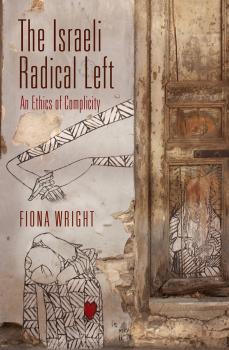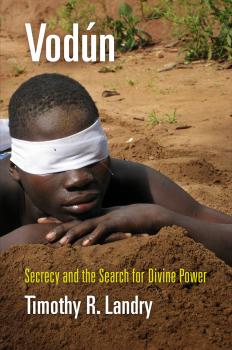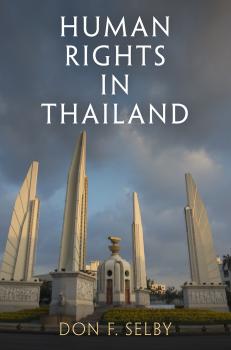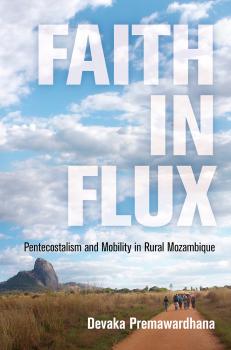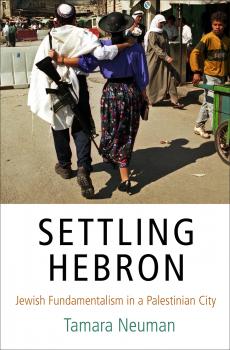Биология
Различные книги в жанре БиологияThe Israeli Radical Left
In The Israeli Radical Left , Fiona Wright traces the dramatic as well as the mundane paths taken by radical Jewish Israeli leftwing activists, whose critique of the Israeli state has left them uneasily navigating an increasingly polarized public atmosphere. This activism is manifested in direct action solidarity movements, the critical stances of some Israeli human rights and humanitarian NGOs, and less well-known initiatives that promote social justice within Jewish Israel as a means of undermining the overwhelming support for militarism and nationalism that characterizes Israeli domestic politics. In chronicling these attempts at solidarity with those most injured by Israeli policy, Wright reveals dissent to be a fraught negotiation of activists' own citizenship in which they feel simultaneously repulsed and responsible. Based on eighteen months of fieldwork, The Israeli Radical Left provides a nuanced account of various kinds of Jewish Israeli antioccupation and antiracist activism as both spaces of subversion and articulations of complicity. Wright does not level complicity as an accusation, but rather recasts the concept as an analysis of the impurity of ethical and political relations and the often uncomfortable ways in which this makes itself felt during moments of attempted solidarity. She imparts how activists persistently underline their own feelings of complicity and the impossibility of reconciling their principles with the realities of their everyday lives, despite the fact that the activism in which they engage specifically aims to challenge Jewish Israeli citizens' participation in state violence. The first full ethnographic account of the Israeli radical left, Wright's book explores the ethics and politics of Jewish Israeli activists who challenge the violence perpetrated by their state and in their name.
Vodun
Tourists to Ouidah, a city on the coast of the Republic of Bénin, in West Africa, typically visit a few well-known sites of significance to the Vodún religion—the Python Temple, where Dangbé, the python spirit, is worshipped, and King Kpasse's sacred forest, which is the seat of the Vodún deity known as Lokò. However, other, less familiar places, such as the palace of the so-called supreme chief of Vodún in Bénin, are also rising in popularity as tourists become increasingly adventurous and as more Vodún priests and temples make themselves available to foreigners in the hopes of earning extra money. Timothy R. Landry examines the connections between local Vodún priests and spiritual seekers who travel to Bénin—some for the snapshot, others for full-fledged initiation into the religion. He argues that the ways in which the Vodún priests and tourists negotiate the transfer of confidential, sacred knowledge create its value. The more secrecy that surrounds Vodún ritual practice and material culture, the more authentic, coveted, and, consequently, expensive that knowledge becomes. Landry writes as anthropologist and initiate, having participated in hundreds of Vodún ceremonies, rituals, and festivals. Examining the role of money, the incarnation of deities, the limits of adaptation for the transnational community, and the belief in spirits, sorcery, and witchcraft, Vodún ponders the ethical implications of producing and consuming culture by local and international agents. Highlighting the ways in which racialization, power, and the legacy of colonialism affect the procurement and transmission of secret knowledge in West Africa and beyond, Landry demonstrates how, paradoxically, secrecy is critically important to Vodún's global expansion.
Human Rights in Thailand
When the Thai state violently suppressed a massive prodemocracy protest in «Black May,» 1992, it initiated an unprecedented period in Thailand. The military, shamed and chagrined, withdrew from political life, and the democracy movement had more latitude than ever before in Thailand's history, gaining an institutional presence previously unseen. This extraordinary moment created a unique opportunity for the human rights movement to emerge, for the first time, on a national scale in Thailand. Don F. Selby examines this era of Thai political history to determine how and why the time was ripe for such developments. By placing greater emphasis on human rights as an anthropological concern, he focuses on the understandings that social actors draw from human rights struggles. He concludes that what gave emergent human rights in Thailand their shape, force, and trajectories are the ways that advocates engaged, contested, or reworked debates around Buddhism in its relationship to rule and social structure; political struggle in relation to a narrative of Thai democracy that disavowed egalitarian movements; and traditional standards of social stratification and face-saving practices. In this way, human rights ideals in Thailand emerge less from global-local translation and more as a matter of negotiation within everyday forms of sociality, morality, and politics.
Faith in Flux
Anthropologist Devaka Premawardhana arrived in Africa to study the much reported «explosion» of Pentecostalism, the spread of which has indeed been massive. It is the continent's fastest growing form of Christianity and one of the world's fastest growing religious movements. Yet Premawardhana found no evidence for this in the province of Mozambique where he worked. His research suggests that much can be gained by including such places in the story of global Christianity, by shifting attention from the well-known places where Pentecostal churches flourish to the unfamiliar places where they fail. In Faith in Flux , Premawardhana documents the ambivalence with which Pentecostalism has been received by the Makhuwa, an indigenous and historically mobile people of northern Mozambique. The Makhuwa are not averse to the newly arrived churches—many relate to them powerfully. Few, however, remain in them permanently. Pentecostalism has not firmly taken root because it is seen as one potential path among many—a pragmatic and pluralistic outlook befitting a people accustomed to life on the move. This phenomenon parallels other historical developments, from responses to colonial and postcolonial intrusions to patterns of circular migration between rural villages and rising cities. But Premawardhana primarily attributes the religious fluidity he observed to an underlying existential mobility, an experimental disposition cultivated by the Makhuwa in their pre-Pentecostal pasts and carried by them into their post-Pentecostal futures. Faith in Flux aims not to downplay the influence of global forces on local worlds, but to recognize that such forces, «explosive» though they may be, never succeed in capturing the everyday intricacies of actual lives.
Settling Hebron
The city of Hebron is important to Jewish, Islamic, and Christian traditions as home to the Tomb of the Patriarchs, the burial site of three biblical couples: Abraham and Sarah, Isaac and Rebecca, and Jacob and Leah. Today, Hebron is one of the epicenters of the Israel-Palestine conflict, consisting of two unequal populations: a traditional Palestinian majority without citizenship, and a fundamentalist Jewish settler minority with full legal rights. Contemporary Jewish settler practices and sensibilities, legal gray zones, and ruling complicities have remade Hebron into a divided Palestinian city surrounded by a landscape of fragmented, militarized strongholds. In Settling Hebron , Tamara Neuman examines how religion functions as ideology in Hebron, with a focus on Jewish settler expansion and its close but ambivalent relationship to the Israeli state. Neuman presents the first critical ethnography of the Jewish settler populations in Kiryat Arba and the adjacent Jewish Quarter in the Old City of Hebron,considered by many Israelis as the most «ideological» of settlements. Through extensive fieldwork, interviews with settlers, soldiers, displaced Palestinian urban residents and farmers as well as archival research, Neuman challenges dismissive portraits of settlers as rigid, fanatical adherents of an anachronistic worldview. At the same time, she reveals the extent of disconnection between these settler communities and mainstream Modern Orthodox Judaism, both of which interpret written sources on the sacredness of land—biblical texts, rabbinic commentary, and mystical traditions—in radically different ways. Neuman also traces the violent results of a settler formation, Palestinian responses to settler encroachment, and the connection between ideological settlement and economic processes. Settling Hebron explores the complexity of Hebron's Jewish settler community in its own right—through its routine practices and rituals, its most extreme instances of fundamentalist revision and violence, and its strategic relationships with successive Israeli governments.
Dynamics of Difference in Australia
In Dynamics of Difference in Australia , Francesca Merlan examines relations between indigenous and nonindigenous people from the events of early exploration and colonial endeavors to the present day. From face-to-face interactions to national and geopolitical affairs, the book illuminates the dimensions of difference that are revealed by these encounters: what indigenous and nonindigenous people pay attention to, what they value, what preconceived notions each possesses, and what their responses are to the Other. Basing her analysis on her extensive fieldwork in northern Australia, Merlan highlights the asymmetries in the exchanges between the settler majority and the indigenous minority, looking at everything from forms of violence and material transactions, to indigenous involvement in resource development, to governmental intervention in indigenous affairs. Merlan frames the book within the current debate in Australian society concerning the constitutional recognition of indigenous people by the nation-state. Surveying the precursors to this question and its continuing and unresolved nature, she chronicles the ways in which an indigenous minority can remain culturally different while simultaneously experiencing the transformative forces of domination, constraint, and inequality. Conducting an investigation of long-term change against the backdrop of a highly salient and timely public debate surrounding indigenous issues, Dynamics of Difference has far-reaching implications both for public policy and for current theoretical debates about the nature of sociocultural continuity and change.
Liquid Capital
In the nineteenth century, politicians transformed a disease-infested bog on the southwestern shore of Lake Michigan into an intensively managed waterscape supporting the life and economy of Chicago, now America's third-most populous city. In Liquid Capital , Joshua A. T. Salzmann shows how, through a combination of entrepreneurship, civic spirit, and bareknuckle politics, the Chicago waterfront became a hub of economic and cultural activity while also the site of many of the nation's precendent-setting decisions about public land use and environmental protection. Through the political saga of waterfront development, Salzmann illuminates Chicago's seemingly paradoxical position as both a paragon of buccaneering capitalism and assertive state power. The list of actions undertaken by local politicians and boosters to facilitate the waterfront's success is long: officials reversed a river, built a canal to fuse the Great Lakes and Mississippi River watersheds, decorated the lakeshore with parks and monuments, and enacted regulations governing the use of air, land, and water. With these feats of engineering and statecraft, they created a waterscape conducive to commodity exchange, leisure tourism, and class harmony—in sum, an invaluable resource for profit making. Their actions made the city's growth and the development of its western hinterlands possible. Liquid Capital sheds light on these precedent-making policies, their effect on Chicago's development as a major economic and cultural force, and the ways in which they continue to shape legislation regarding the use of air and water.
Fragile Families
In the past decade, debates over immigrant rights and family rights, and accompanying concerns over birthright citizenship, have taken center stage in popular media and mainstream political debates. These debates, however, frequently overlook the role of the public child welfare system in the United States—the agency charged with protecting children and maintaining the integrity of families. Based on research conducted in the San Diego-Tijuana region between 2008 and 2012, Fragile Families tells the stories of children, parents, social workers, and legal actors enmeshed in the child welfare system, and sheds light on the particular challenges faced by the children of detained and deported non-U.S. citizen parents who are simultaneously caught up in the immigration system in this border region. Many families come into contact with child welfare services because of the precariousness of their lives—unsafe housing, unstable employment, and the conditions of violence, drug use, and domestic violence made visible by the heightened police presence in impoverished communities. Naomi Glenn-Levin Rodriguez examines the character of child welfare decision-making processes and how discretionary decisions constitute the central avenue through which race, citizenship, and other cultural processes inflect child welfare practice in a manner that disproportionately impacts Latina/o families—both undocumented and U.S. citizens. Drawing on ethnographic fieldwork to look at how immigration enforcement and child welfare play central roles in the ongoing production of citizenship, race, and national belonging, Fragile Families focuses on the everyday experiences of Latina/o families whose lives are shaped at the nexus of child welfare services and immigration enforcement.
John James Audubon
John James Audubon's The Birds of America stands as an unparalleled achievement in American art, a huge book that puts nature dramatically on the page. With that work, Audubon became one of the most adulated artists of his time, and America's first celebrity scientist. In this fresh approach to Audubon's art and science, Gregory Nobles shows us that Audubon's greatest creation was himself. A self-made man incessantly striving to secure his place in American society, Audubon made himself into a skilled painter, a successful entrepreneur, and a prolific writer, whose words went well beyond birds and scientific description. He sought status with the «gentlemen of science» on both sides of the Atlantic, but he also embraced the ornithology of ordinary people. In pursuit of popular acclaim in art and science, Audubon crafted an expressive, audacious, and decidedly masculine identity as the «American Woodsman,» a larger-than-life symbol of the new nation, a role he perfected in his quest for transatlantic fame. Audubon didn't just live his life; he performed it. In exploring that performance, Nobles pays special attention to Audubon's stories, some of which—the murky circumstances of his birth, a Kentucky hunting trip with Daniel Boone, an armed encounter with a runaway slave—Audubon embellished with evasions and outright lies. Nobles argues that we cannot take all of Audubon's stories literally, but we must take them seriously. By doing so, we come to terms with the central irony of Audubon's true nature: the man who took so much time and trouble to depict birds so accurately left us a bold but deceptive picture of himself.
Marriage Without Borders
In popular songs, televised media, news outlets, and online venues, a jabaaru immigré («a migrant's wife») may be depicted as an opportunistic gold-digger, a forsaken lonely heart, or a naïve dupe. Her migrant husband also faces multiple representations as profligate womanizer, conquering hero, heartless enslaver, and exploited workhorse. These depictions point to fluctuating understandings of gender, status, and power in Senegalese society and reflect an acute uneasiness within this coastal West African nation that has seen an exodus in the past thirty-five years, as more men and women migrate out of Senegal in hope of a better financial future. Marriage Without Borders is a multi-sited study of Senegalese migration and marriage that showcases contemporary changes in kinship practices across the globe engendered by the neoliberal demand for mobility and flexibility. Based on ten years of ethnographic research in both Europe and Senegal, the book examines a particular social outcome of economic globalization: transnational marriages between Senegalese migrant men living in Europe and women at home in Senegal. These marriages have grown exponentially among the Senegalese, as economic and social possibilities within the country have steadily declined. More and more, building successful social lives within Senegal seems to require reaching outside the country, through either migration or marriage to a migrant. New kinds of affective connection, and disconnection, arise as Senegalese men and women reshape existing conceptions of spousal responsibility, filial duty, Islamic piety, and familial care. Dinah Hannaford connects these Senegalese transnational marriages to the broader pattern of flexible kinship arrangements emerging across the global south, arguing that neoliberal globalization and its imperative for mobility extend deep into the family and the heart and stretch relationships across borders.
